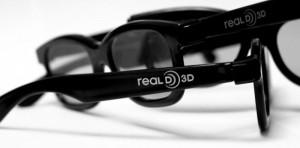content
3 Insights That Protect You from Being One-of-Those Dental Emailers

You know “that person you don’t want to receive email from…?” It’s the eye-roll inducing marketing cousin of Cecily Strong’s SNL (Saturday Night Live) sketch, “the girl you wish you hadn’t started a conversation with…” character.
A friend and colleague of mine received one of THOSE emails. And the take-aways are beneficial if you want to avoid being “the dental emailer whose list you wish you hadn’t added your name to.”
I could make this short and sweet by saying the fix is easy. “Unsubscribe!”
You and your readers have more power than you realize. So, you should think long and hard about the content you send (more on that in a moment).
Something amazed me when I worked at a dental practice. Patients would often whine about the email we sent about this or that.
They would often invest more time voicing their dissatisfaction for whatever reason than reading, deleting, or perish the thought, unsubscribing.
As Zig Ziglar would say, “Some people are born in the objective case in the kick-a-tive mood.” Translation: they’ll whine about anything.
Yet do they have a valid point when it comes to the email you send that invades their space (permission granted, of course)? And are you giving them a reason not to boot you to the curb via a quick click of the unsubscribe link?
Consider my friend and colleague’s experience your wake up call!
Here’s the subject line of the email she received:
“Hey, [FIRSTNAME], what’s wrong with your blog?”
I’m not kidding, that’s it.
First, the subject line is an attempt at being “cute.”
It typically doesn’t work because we’re accustomed to it…like we are hype.
When hype leads the way. I’m out and so are most readers.
I avoid people who come off this way. And I certainly don’t waste my time reading emails or any marketing resources that start a conversation with such a tone.
Which brings me to my second point.
It’s an attempt at being conversational, but it misses a vital element of that process.
I could say that to my friend/colleague in a subject line to her without question. Why?
We have a relationship. And that’s my point.
Evaluate the relational quality of your list.
- Are you chummy? (Can you talk about anything relevant with them?)
- Do they enjoy hearing from you?
- Did they ask to hear from you?
- Does the information or conversation you share with them help them with something they need?
And this is HUGE…
- Can you continue the conversation via email at any time, about any subject, and they look forward to hearing what you have to say?
Before you even get a second chance, you must understand this.
The content of your email communications are irrelevant if you haven’t earned the right to be heard.
I subscribe to a number of email lists. Confession time: I don’t read all of them.
In fact, since we’re cleaning the slate here – I occasionally delete some of them without even opening them.
The point?
Timing matters.
Not all email subjects – even from trusted, valued sources – hit my hot-button on a given day. You won’t always bat a thousand when you send an email to your list.
But you increase your batting average when they find your content helpful and useful more than they find it hype-ful (how’s that for a word?).
Assure that your email communications to your dental patient, client, or house-list are helpful not hype-ful!
- Share an oral health trend instead of the latest triple-your-savings offer of the month.
- Lead with a benefit – something that improves their life, health, etc.
- Be generous with information that serves them with no-strings-attached (e.g. “Like” our Facebook page to enter our contest, Refer a friend or family member for 10% off your next treatment, etc). Email your list just-because without an “angle.”
Trust still translates via email.
Scammers, spammers, and hyped up marketers have peed-in-the-pool long enough. It’s time to take back the valuable online territory they’ve fouled up.
It should go without saying that you’re trustworthy. And your email content is simply another way your character shines.
Patients, clients, and those you do business with will actually anticipate seeing you in their inbox if you’re a source of useful, beneficial content.
And these days it’s really about the information.
Profit follows trust.
How to Create Irresistible Dental Marketing that People Respond to Again and Again
The hummingbirds are back. How do I know this?
It’s the same reason people will choose your dental services without you feeling the need to hype up your marketing strategies.
Hummingbird market research (not sure if this is legit…but stick with me) says they return to my region in mid-April. And the experts are usually spot on.
But there’s another reason.
I hung my trusty feeder and filled it with an irresistible resource.
Hummingbirds find me because they seek out the bright, flower-like feeder that contains the sweet, delicious, sugar-water (nectar) I provide just outside my kitchen window. These fascinating creatures flit back and forth for the satisfying energy source countless times from April to October each year.
I just gave you 3 big ideas with my hummingbird observations. Did you catch ‘em?
1-Stop feeling the need to “hype-up” your marketing strategies.
Why do you do this?
Frankly, why does anyone do this?
My perspective? It has to do with the age-old, in-your-face marketing approaches we’re accustomed to.
Most of us were raised on TV and radio advertising that uses over-the-top techniques to get your attention (and they still do). And this was in the hopes that you’d remember them when it came time for a buying decision.
Each morning, my wife and I have the local news on our bedroom TV while we’re dressing and preparing for our day. And every morning, much to her frustration, I make critical, tongue in cheek comments about the advertising spots that run.
Many, if not most are local auto dealerships. Their repetitious, ear-worm inducing, hyper voice over specialists make me want to reach through the screen and shout, “Enough already!”
You get my point, right?!
Be careful that the ear-worm effect doesn’t infect your next dental promotion. Screaming at people to schedule, call, “Like” (Facebook ads, contests, etc), etc risks the same as those obnoxious ad pitches – changing the channel.
The downside (for you) – changing the channel translates to changing dental providers.
And if you’re marketing to dental providers (as many readers here do), be careful you don’t risk the same. I’ve watched your mailers being routinely tossed in the trash by the designated mail “screener” when I worked in a dental practice.
No one’s opening your mailer…because you’re not speaking their language. Or you’re using techniques that are a straight-up turn-off.
It’s the equivalent principle of me placing something less appealing in my hummingbird feeder. A couple of drags off that and those lil’ birds are off to sweeter fields.
It’s more attractive (effective) to create a conversation around your service, products, offers than it is to randomly shove it in their face. Because that’s-how-it’s-always-been-done isn’t a strategy, it’s a path to marketing extinction.
- Build a relationship by providing no-strings-attached (free) content via a consistent blog presence on your website.
- Send email that informs or delivers value (see our latest blog post, etc) instead of promoting something or asking readers to schedule.
- Watch your language – or rather your tone – in each communication or content piece your deliver (ditch the salesy, pitchy tone).
2-Listening IS your market research.
Your patients or clients are asking tons of questions. And many of their questions aren’t obvious…unless you’re listening between the lines and in the margins.
Keep your ear to the ground. What are your patients or clients telling you?
Deep dive into your online reviews or post-treatment/post-sales surveys. Locate the truths below the surface (even the ones tough to hear).
Like Jack Nicholson’s character said to Tom Cruise’s in A Few Good Men – “You can’t handle the truth!”
But you also can’t handle not learning from it and improving your service and marketing strategies.
And speaking of market research.
- Survey your patients/clients with a purpose. Avoid routine, meaningless, corporate-ized, canned survey documents.
- Brainstorm some strategic questions that help you understand what your patients or clients are thinking. Then…respond with like-minded content and marketing strategies.
3-Be the expert they’re listening to.
No one really likes to brag about themselves. Unless you’re a card carrying narcissistic, pompous individual (unfortunate for us all, some are).
The better approach – become brag-able. Translation: become a recognizable expert or authority.
You (yes, YOU) provide a unique, branded approach to whatever your specialty is. Perhaps you’re thinking, “But, there are 100’s of dentists in my city or region…!”
So what?
Here’s my question – are they recognized as a go-to provider, not just in treatment…but also with valuable information about that treatment?
Or…the science behind the treatment?
Or…the latest research (explained in street-level terms)?
Or…with clear, non-technical answers to the questions people are asking about the treatment (remember the earlier point on “listening”)?
These days, people want finger-tip access to information about what’s important to them in the moment. Will you be there…with answers?
- If your website doesn’t have a blog or article page – start one…NOW!
- Make your blog a virtual library of relevant, useful information specific to your expertise, services, etc.
- Build a tribe of loyal readers and sharers by promoting your content to your patient or client list via email updates.
And if you’ve delayed starting a blog because you’re concerned about time or have a fear of writing…
- Hire a content curator and/or a copywriter to research and ghost-write your content on a consistent schedule.
It’s your time to stand out as an expert by taking a few intentional steps. Create the content, share the content, and the results will show.
Let’s review…
Stop the hype. Listen as research. Highlight your expertise.
People, like hummingbirds, migrate to where they find what they need.
3D Dental Copywriting That Compels People to Choose Your Services

Saying something is good, great, state-of-the-art, etc. makes a point. But if you want your dental copywriting and dental marketing content to have “punch” you must go deeper.
I occasionally watch a local news program during lunch. It’s one of those noontime programs that features entertaining, informative special segments during the hour long broadcast.
The host anchor made a comment during an episode’s cooking segment that I’ve laughed about many times since. The segment featured the use of beer in a particular recipe for a meat based pie.
The guest cook discussed the various ingredients and in particular the use of beer for added flavor. The host anchor responded off-the-cuff and enthusiastically – “I don’t drink beer…but I sure do like it in my pie!”
I don’t know why the anchor’s statement made me laugh. But after doing so, it made me think.
Products and services have multiple benefits.
Beer, for example, is a refreshing, enjoyable beverage. Even so, many don’t prefer drinking it…but they will add it to a recipe.
That said, the dominant benefit that’s used to market beer is what? It’s not people sitting around, partying, pouring beer into a kettle on a stove top.
There are dominant benefits and there are dimensional benefits.
Copywriting master, Clayton Makepeace says there are “3 deadly blunders” made in marketing copy and content.
- Mistaking features for benefits.
- Mistaking processes for benefits.
- Missing different types of benefits.
His solution: “Drill down to the real, bottom-line rubber-meets-the-road benefits your product (or service) provides.”
Someone “drilled down” and discovered (perhaps while sipping an ice-cold, refreshing brew) that beer adds flavor to a favorite recipe. Beer as a refreshing, relax-with-my-friends beverage is a dominant benefit. Beer as a flavor-enhancing ingredient in your main course is a dimensional benefit.
3D your products and services to add compelling power to your dental marketing copy and content.
Comprehensively inventory your product/service features.
List every objective fact your product/service has. What’s unique, special, compelling, interesting, etc. about the dental service you’re promoting right now?
List everything you can think of.
- What’s its purpose? What does the service do for your patient/client?
- What are its physical characteristics? How will a patient/client experience it visually, by sound, taste, etc.?
- How long does it last? What will the experience be like? When will results be seen? How does it compare?
- What’s been said about it? How have others experienced it? How is it guaranteed?
- What choices are offered? Size? Color? Flavor? Is it customizable?
- How is it priced? Is it dividable by cost per year, month, week, or day?
“Attach a ‘Why’ to each feature”
Feature: Digital x-rays are the latest, state-of-the-art technology. Why: Faster image views means less time in the operatory.
Feature: A TV in every exam room. Why: More comfortable for the patient and time passes quickly during the appointment.
The “Why” forces you to think about benefits. People are sold by benefits not features.
Transform features into benefits.
Force the all-important question before you promote your product/service. And the question is: “What’s in it for me?”
Features must connect. Your patients or clients must experience (via your copy/content) how the service directly improves their life.
What fear does it help them overcome? How does it save them time and money? What have others experienced by using it?
“Dimensionalize each benefit.”
Feature: A TV in every exam room.
Why: More comfortable for the patient and time passes quickly during the appointment.
Benefit: Your appointment is over before you realize it.
Dimensionalized benefit: Great for fidgety kids. The time zips by. In fact, just last week little Jimmy asked if he could stay longer at the office!
Get “emotional” by connecting each dimensionalized benefit with a dominant resident emotion.
Think about how your patient/client will FEEL personally after they’ve enjoyed each benefit your service/product provides.
And there’s another emotional perspective people have too.
How will your patient/client feel as others see them enjoying your services’/product’s practical benefits? That’s an even deeper question.
There’s more to your services and products than meets the eye. Go deeper and tap into the compelling reasons people will buy-in.
Question: Why is it easier to focus on features than diving deeper into benefits? How is dimensionalizing your benefits useful to you? Comment.
3 Compelling Ways to Use Story in Your Dental Marketing Content

Stories have power. It’s why you enjoy a night at the movies or a compelling summer beach read.
And speaking of compelling – that’s the super-power element of effective stories. They compel you.
Your dental marketing content will succeed these days over the marketplace noise for one reason. And you should evaluate your copy and content by this emerging standard.
Story sells.
A recent post on Copyblogger compelled me to explore more deeply this whole idea of story telling content. I’ve been a fan of it for awhile.
The Copyblogger article carried me to another dimension in my future writing for clients. And it will do the same for you if you value having your dental marketing content stand out.
Sean D’Souza says your content storyline must have three core elements to compel a response.
1-The sequence – the events (points, ideas, etc) that build upon each other and create meaning.
2-The suspense – the drama of what’s happening, what’s up, or what’s approaching.
3-The roller coaster – the up and down and all around of good to bad to good, etc.
The reason story works.
A fair amount of marketing content is full of hubris. It talks about YOU, YOU, YOU.
Overused phrases like “state-of-the-art,” and “We’re proud to (announce this or that),” offer very little compelling value.
Where’s the story? And if there is one how does it benefit the reader?
Leaving out compelling benefits mutes your storyline. It’s like reading a clearance-rack biography or paying good money for a 1-star movie – boring and disappointing!
A story (your job: to find it – or hire someone who can – and tell it) has the advantage of a logical and compelling sequence of events. Add in some suspense and a roller-coaster of features and benefits to draw your reader in.
What does this have to do with dental marketing copy and content? Good question.
Enough “suspense.” Here’s the scoop.
3 Story-Intense Dental Marketing Content Tools to Compel Interest in Your Services
1-Case studies
These are story super-powers. A case study is basically a success story.
A dental case study would include a “villain” such as oral cancer, periodontal disease, bleeding gums, yellowed teeth, crooked teeth, etc. Your sequence of events would include the problem, product/treatment/service, and the solution story.
When a patient or prospective client finishes reading this brief success story they’re compelled to take action. Your offer is the action that will solve their problem and create a profitable outcome for you.
2-Blog posts
Appear regularly on your reader’s radar. Blog posts have viral capacity because they create a “what’s next?” response.
Read a compelling blog post and you’ll anticipate the next one. Blog content is evergreen and ever evolving.
Exceptional bloggers earn a spot on your newsfeed. You bookmark their content like you do a favorite passage in a novel or non-fiction book.
Your blog posts will move up the list of fave-reads when you add in story factors.
Keep your posts to between 350 and 500 words on average. Tease the next post by not giving away too much “plot.” Your readers will thank-you by returning again and again to follow your “story.”.
Blog posts build trust too. Become a trusted expert by delivering trusted content week in week out.
Eventually readers become patients, clients, or customers. They will buy/seek your services when you’ve proven yourself as a trusted source of expertise via your blog content.
3-Email
Email is a perfect (and overlooked) canvas for story based copy. Avoid jumping in with your promotion or facts that tip the reader that this is another sale-sy email.
Lead with a story. How?
Listen to culture, current trends, local events, your own experiences. Use these to craft a story that introduces your email.
Lead with a story in your email copy. The added drama will compel your reader to stay with you.
Two essentials – make a good transition from the story to the email purpose (promotion, information, etc.).
And…don’t miss this…
Write a subject line that prompts the email to be opened. Many emails fail at the inbox level because the subject line is anything but compelling.
An email subject line is like a movie trailer. It must move your reader to see the full feature.
Add some drama to your dental marketing copywriting and content. Use story to compel interest and your expertise will profit.
Which content “tool” do you most often use to promote your dental services?
4 Words That Can Transform Your Dental Marketing Copy
Benefits sell! That’s core to effective copywriting and the power language you need to promote your dental services.
The Sunday edition of my local newspaper featured two ads that got my attention. How they got my attention is what’s important to this post (realize henceforth – I’m more critical than the average reader).
First, it WASN’T the somewhat eye-candy graphics or the positioning on the page (two big deals to most newsprint advertisers). Second, it WASN’T the headline – at least in the way you might be thinking.
The ad’s colors and placement did draw my eye to it. But it was the headline that bothered me.
The ad writer did the common, believed effective, ad naseum, amateur, I-have-a-gazillion-ads-to-write-today-so-I’ll-take-the-easy-way, feature-first headline approach. And perhaps wrapped it up by asking the design department to throw in some cool colors and bold fonts so people notice.
I confess – I read the ad. Was I compelled?
That’s the question your copy must answer – is it compelling?
And copywriting that compels doesn’t lead with features (everyone does that) it leads with benefits.
This brings to mind a recent meeting I was in. Our dental hygiene team was discussing how to promote oral cancer screenings to our patients. Even though the service is undeniably beneficial and has a relatively low cost point (beyond insurance coverage) some patients aren’t compelled.
No doubt it’s a beneficial procedure. But how do you get to the compelling core benefits without dumbing-it-down with feature heavy content and graphics (what I’ve called “est-syndrome” in previous posts.).
Here are 4 words to keep front-of-mind when mining the benefits of your dental products and services.
1) Urgency (Think-if they don’t get this now the world as they know it will end)
Act now! Limited time offer! You must do better than that.
Give your reader a hot-seat reason to jump NOW to get your product or service.
How can you tell the story in the most compelling way? That’s the question.
Urgency isn’t just about prompting a decision. Urgency is about removing the gap as quickly as possible between decision and action.
2) Usefulness (Think – this is so practical…I must show them)
Not all products and services are ultimately useful. So it makes sense that the promotional copy lacks it too.
Do the hard work required to find a product’s or service’s usefulness that’s not obvious. The ultimate task of your copywriting is painting a picture of practical action.
Who’s using the product/service? What’s happened to them? When did they first discover it’s effectiveness? Where are they looking to use it next?
3) Uniqueness (Think – no one has the “angle” we do. And that “angle” is…)
Being unique is overrated. Especially when it’s confused with creative.
How creative your copy is doesn’t necessarily mean it’s unique. You must find a way to tell the story in a way no one’s told it yet.
This may or may not be the most creative. A unique message is about captivating a person’s buying emotion in a way no one has before so the buying decision keeps repeating itself.
4) Ultra-specific (Think – then think again…and again until it’s crystal clear)
The problem with many marketing messages is just that – they contain more than one message. The key to specificity (love that word) is funneling all the possible ideas into one, compelling message.
Too many messages in a single promotion confuses. Compelling copy is about clarity.
It’s the difference in a laser and a light-bulb. One illuminates, the other penetrates.
Certainly, the end result you desire is more than merely illuminating your “market.” Why not penetrate it?
I’ll admit I’m more critical of marketing copy than the average reader. But I know good copywriting when I see it.
And usually it’s because I’m reaching for my wallet.



